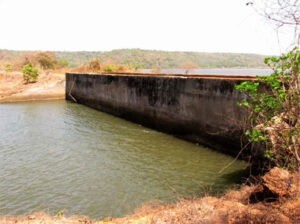Report of Bombay Natural History Society says three creeks lost large swathes of mangroves; rare mangrove species at risk, Rampant bund building, unsustainable aquaculture, and industrial growth are severely damaging mangroves in the Konkan coast’s three prominent creeks, claims a recent report based on ongoing studies of the Bombay Natural History Society (BNHS)
The report, titled Khar land development bunds affecting mangrove cover: case studies from Ratnagiri, reveals the severe impact on mangroves in vast stretches of three creeks—Jaigad, Bankot and Sakhartar—caused particularly by bunds being constructed by the Kharland Development Board under the irrigation department of the Maharashtra government
Comparing satellite images of the mangrove areas taken by the American National Aeronautics and Space Administration (NASA) in 1989 with images from online free platform Google Earth in 2013, BNHS has sought to provide evidence of the substantial loss of mangrove cover in large swathes of the three creeks.
The report describes damage to 108 mangroves in the Lagvan–Kasari–Satkondi mangrove patch along the Jaigad creek after a one-kilometer long bund was constructed three decades ago. The mangrove mortality increased over the past one month after officials closed down most sluice gates, cutting off tidal water to the mangroves. The area is now close to Jindal thermal power plant and Chowgule Steamships port project. NASA images reveal thick mangrove cover in the area in 1989, which has dwindled over the past two decades to a meager 35 hectares.


The Shipole-Veswi bund, connecting two villages across the Bankot Creek, divides a 48-hectare mangrove patch into 12.7 hectares, facing the creek and 35.3 hectares facing the land, which has been affected by the bund. BNHS claims that the water flowing into this landward area through two gates in the bund at present is likely to be diverted to existing and upcoming aquaculture units in the area by way of the ongoing additional construction, thus depriving the landward mangrove patch of crucial saline water.
At Shirgaon, a 2.5 km long bund has encircled mangroves spread over 75 hectares and severely damaged them as access to tidal waters has been cut off. Heavy mortality of mangroves (species Sonneratia alba) has been witnessed after the construction of the bund. Recently, when the bund broke in some places, the mangroves returned with significant changes in species composition.
A BNHS statement said, “A rare mangrove species, Xylocarpus granatum, has been recorded from some localities close to the affected area in Jaigad. Research reports confirm declining populations of this species all over the coast of India, thus highlighting the need for conservation wherever it exists.”
The report cites claims made by anonymous villagers and says at least some of the bunding activity in Jaigad creek has been going on to support the industries located in the vicinity.
“The purpose of the bund is not clear and there has been different information with different groups in the villages. However, it was reported that the industries (JSW and Chowgule Steamships) intend to store fresh water within the enclosed area. There are complaints from villagers that these activities are causing drying up of the wells in the vicinity, and thus there is strong opposition of the villagers to the whole plan,” the report said.
Despite repeated attempts, officials from the state government’s Khar Land Development Circle and Mangrove Cell of the Forest Department could not be reached for comments.
